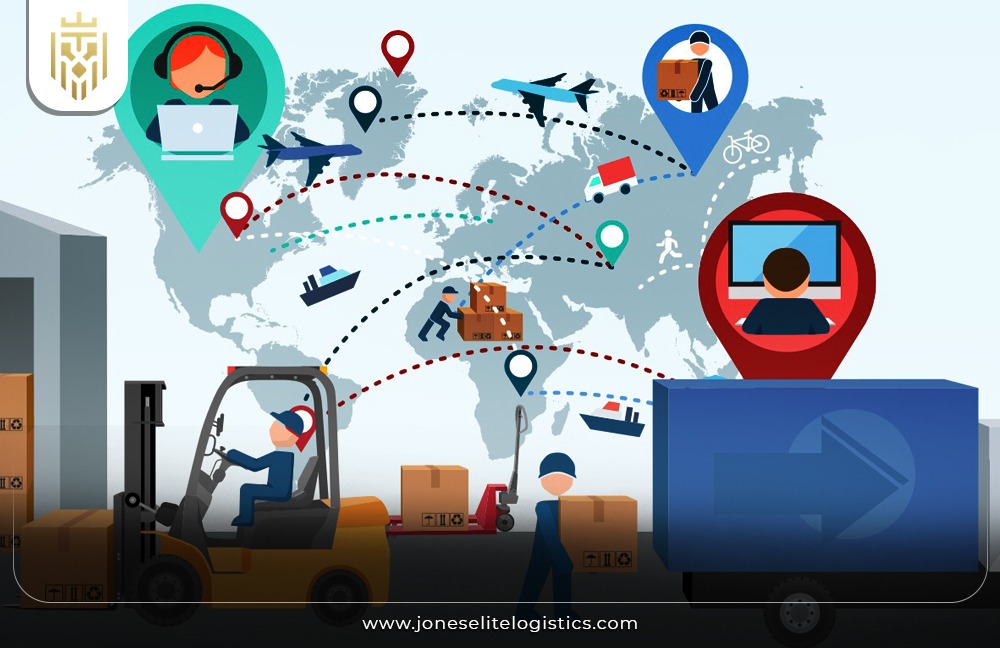Introduction to Transportation Management Systems:
Transportation Management Systems (TMS) are comprehensive software solutions that improve, streamline, and automate transportation operations for businesses. They include advanced capabilities like route planning, freight consolidation, carrier selection, and detailed performance tracking. TMS boosts operational efficiency, reduces transportation costs, enhances visibility, and guarantees on-time deliveries by offering full control over the entire logistics process, enabling businesses to optimize supply chain operations.

Importance of Transport Management Systems:
TMS is a critical tool for efficient Supply Chain Management, ensuring the seamless movement of goods from origin to destination. It optimizes routes, minimizes transportation costs, eliminates time-consuming manual processes, and improves customer service quality. In today’s globalized market with complex supply chains, TMS is essential for businesses striving for increased competitiveness, enhanced operational efficiency, and long-term customer satisfaction.
Transportation Management Process:
The transportation management process comprises many steps such as order creation, consolidation, route optimization, carrier selection, shipment execution, tracking and tracing, freight payment, and performance analysis. These steps are interrelated and need collaboration between different stakeholders, such as shippers, carriers, and customers, for smooth and efficient logistics operations.
How Transport Management Works:
TMS uses the latest algorithms and data analytics to plan the transportation routes, choose the right carrier, and allocate the resources successfully. Integrated with ERP and warehouse management system, TMS automates processes like real-time shipment tracking, freight payment, and exception handling, improving overall efficiency and customer service.
Capabilities of Transport Management Systems:
Transport Management Systems offers functions like route optimization, load planning, freight audit and payment, carrier management, performance analytics, and integration with other supply chain systems. These help businesses reduce transport costs, increase visibility, manage inventory, and stay compliant with regulations. TMS can be customized to meet specific business needs and evolving market trends.

Transportation Management System Best Practices:
The most effective methods for the use of Transportation Management Systems (TMS) are several important procedures. This covers the planning of meticulously, stakeholder involvement, setting of clear objectives, data accuracy, system maintenance, and improvement of the culture. Establishing effective communication, integrating with other systems like WMS, and staying updated with industry trends helps maximize the benefits of transportation management software.
Functions Of Transportation Management Systems:
Transportation Management Systems are the ones that provide essential functions for smooth logistics operations. The areas of interest are route optimization, carrier selection, load consolidation, freight rating, real-time shipment tracking, comprehensive documentation management, freight audit, and detailed reporting. These operations improve transportation processes, enhance operational efficiency, lower costs across the supply chain operations, and increases visibility across the whole supply chain management network.
Route Optimization:
Route Optimization is a vital function of a Transportation Management System (TMS) that not only minimizes transit times, fuel consumption, and costs but also maximizes resource allocation. By evaluating multiple route options based on cost, distance, delivery windows, and real-time conditions, TMS ensures efficient deliveries, enhanced customer satisfaction, and rapid resolution of emergencies or unexpected issues in logistics operations.
Capacity Planning:
TMS Software greatly aids in capacity planning by analyzing critical factors such as load capacity, distance, delivery windows, vehicle availability, and real-time traffic conditions. This results in better fleet utilization, more precise route planning, and efficient resource allocation, ensuring smooth transport operations with reduced delays, optimal cost management, and improved service reliability.
Load Optimization:
Load optimization ensures the maximum use of vehicle or container space for Freight shipping, while maintaining transportation safety, stability, and compliance. TMS arranges shipments efficiently to avoid empty miles and capacity waste. It also integrates functions like carrier management, freight execution, and real-time supply chain visibility, optimizing freight transportation, reducing transportation costs, and enhancing overall control over logistics operations.
How long it takes to implement a transport management system:
The time of a Transport Management System deployment is determined by many factors. The factors that contribute to the success of the system are the system’s complexity, customization requirements, the extent of data integration, and the readiness of the organization for the change. Usually, the way of implementation lasts from a few months to more than a year. It consists of careful planning, system configuration, strict testing, comprehensive training, and finally the deployment of the TMS solution.

Benefits Of Transport Management Software:
Transport Management Software provides a lot of benefits. For instance, it increases efficiency, cuts costs, improves supply chain visibility, simplifies operations, optimizes route planning, enhances customer service, and ensures compliance with the regulations. These systems take over the work, reduce the chances of manual errors, provide real-time shipment tracking, and enable decision-making based on data, thus, improving the overall supply chain performance.
Benefits of integrating Warehouse management and Transport Management Software:
Warehouse Management Systems (WMS) and Transport Management Software (TMS), when integrated, create a synergy of benefits. It is a key tool for achieving end-to-end visibility, optimizing inventory management, cutting down transportation costs, reducing order processing times, and, most importantly, making the whole supply chain more efficient. In the process of eliminating unnecessary steps and synchronizing the activities between warehouses and transportation, businesses can be more agile and responsive to the customer’s needs, enhancing their overall logistics process.

Future Of Transport Management Systems:
The future of Transport Management Systems (TMS) is shaped by the progress in technology and the changes in industry trends. The combination of artificial intelligence, machine learning, and the Internet of Things (IoT) will change route optimization, predictive analytics, and real-time tracking, revolutionizing intelligent transport. The rise of cloud-based solutions will be the main reason for their proliferation of them, which will provide scalability and accessibility. Besides, TMS will push more and more on sustainability, resilience, and flexibility to cope with the changing market environment and build resilient supply chain operations.
Understanding the trends fueling the future of TMS
Upcoming trends in the TMS industry are the development of advanced analytics for predictive insights, the use of real-time data for dynamic routing and load optimization, and the application of blockchain for the improvement of transparency and security. Besides, automation and electrification will revolutionize transportation networks. The combination with other supply chain technologies such as WMS and demand planning systems will result in the smooth operation of the whole process.
FAQs
1. What is a transportation management systems?
Transportation Management Systems (TMS) are software programs that are created to facilitate and improve the transportation operations in the supply chains. They are the tools that help to perform tasks such as route planning, carrier selection, load optimization, shipment tracking, and freight payment. TMS connects to other supply chain systems to give complete visibility and control of transportation processes, thus, businesses can increase efficiency, cut costs and, at the same time, improve customer service.
2. What are the functions of Transport Management Systems?
Transport Management Software is responsible for the performance of several important tasks that are essential for the smooth running of logistics operations. These are the main elements of logistics management which are route optimization to cut down the fuel costs and delivery time, carrier selection to ensure the best service at the lowest cost, load consolidation to make the truck capacity utilization to the maximum, shipment tracking for the real-time visibility, freight audit for the accurate billing, and reporting for the performance analysis and decision-making. Besides, TMS usually works together with other supply chain software to facilitate smooth communication and data exchange.
3.What are the benefits of Transport Management Systems?
Transportation Management Systems (TMS) significantly enhance logistics operations by optimizing route planning, reducing transportation costs, and improving carrier management. They offer real-time visibility into shipments, increasing overall operational efficiency. TMS also improves customer service and ensures regulatory compliance through seamless integration with supply chain management systems, streamlining end-to-end transportation processes and driving better business outcomes.
4.Who uses Transport Management Systems?
TMS is widely used by logistics service providers, carriers, freight brokers, and businesses managing supply chain operations. Industries such as retail, manufacturing, and e-commerce depend on TMS Software to improve operational efficiency, reduce manual processes, enhance shipment tracking, and integrate inventory management, enabling more agile and responsive logistics strategies for their customers.







